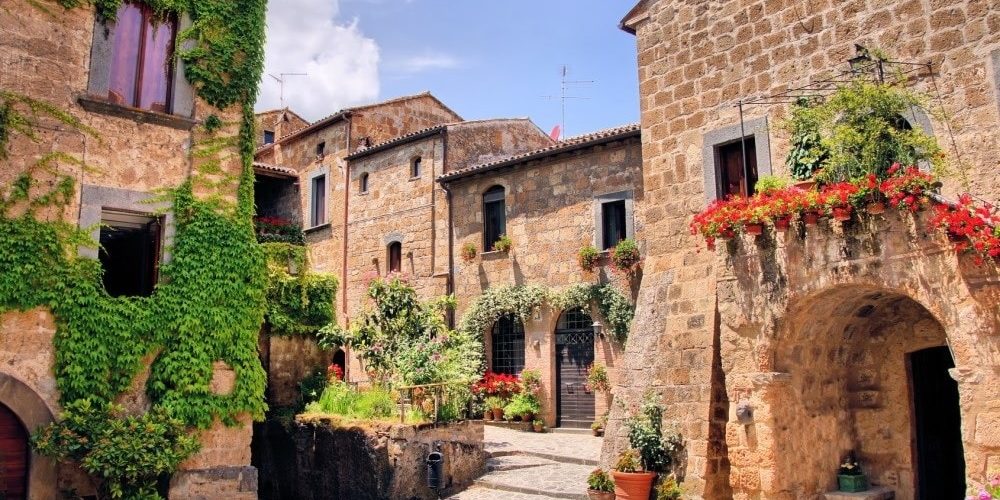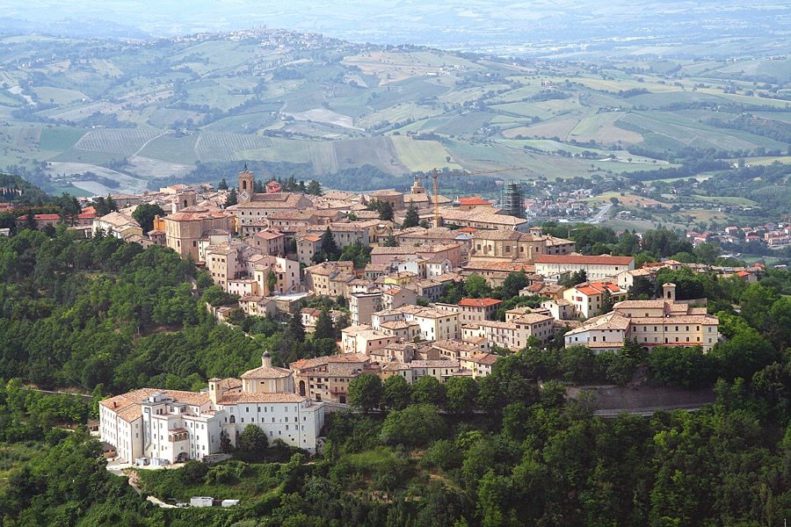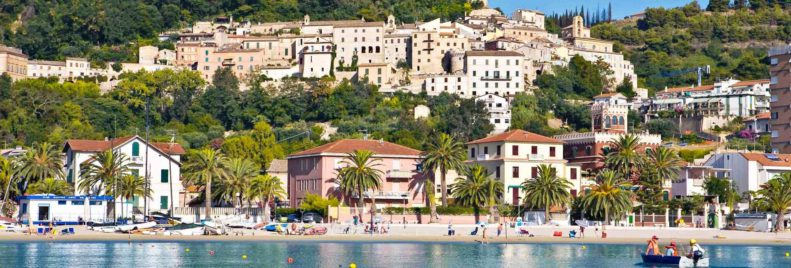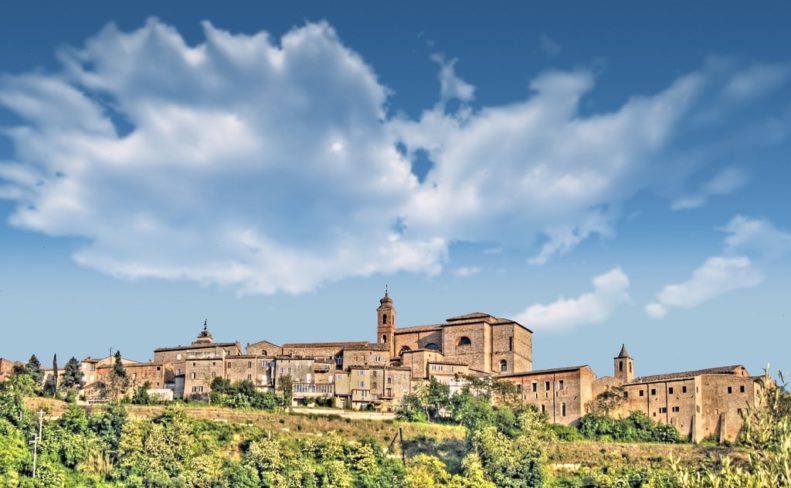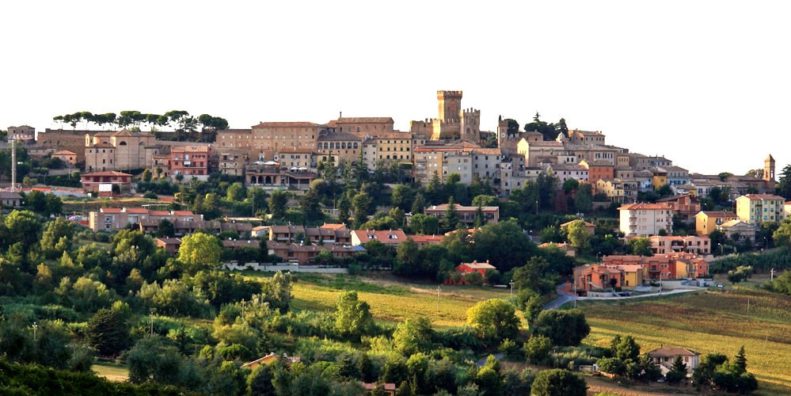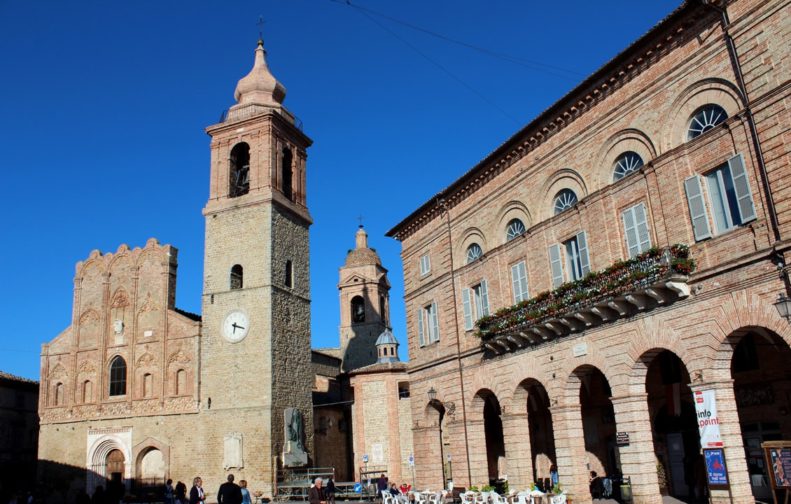Italian villages to visit: the top-5 medieval villages in the Marche region
«In case you are on holiday in or near the Marche region, we suggest some medieval italian villages to visit that will surely fascinate you.»
Italy, as we all know, is a country rich in artistic and historical treasures, but it is rather easy to find them even outside museums. Countless are the villages that our peninsula hosts. The Marche region, for example, is one of the areas with the most small and large villages. Here is a list of italian villages to visit this summer.
Cingoli
Let’s start with Cingoli, a small town nestled on the top of Mount Circe (about 631 m) and called the “Balcony of the Marche” because of its panoramic position on the Marche region. From a vast terrace, on the castle walls, it is possible to enjoy the natural landscape of the Marches, including the Adriatic Sea and the Conero mountain. It is believed that the name of the city derives from the Latin term cingulum which means “something that encircles”, precisely to indicate the reality built on the mountain as if to encircle it. Originally a Roman municipality, the city of Cingoli hosts several noble palaces with warm colors and Renaissance portals, with as many important churches. Among the significant events taking place in Cingoli, we find the historical re-enactment Cingoli 1848, which takes place every July.
Grottammare
Grottammare, also known as the Pearl of the Adriatic, boasts important awards among which are the Blue Flag of Europe and the most beautiful villages in Italy. The marina of Grottammare is dominated by the Old Incasato, bordered by the medieval walls. Entering the citadel you can come across precious monuments such as the 19th-century Palazzetto Ottaviani, the Church of Sant’Agostino, the Church of Santa Lucia, the old hospital that still retains the caduceus, symbol of the Greek God of medicine. Since 2004, the Torrione della Battaglia, a fortification dating back to the 16th century, houses a prestigious collection of works by the Grottammarese sculptor Pericle Fazzini, author of the famous Resurrection in the Nervi hall in the Vatican. Did we convince you? Grottammare is one of the Italian villages to visit.
Montefiore dell’Aso
Between the valleys of the Aso and the torrent Menocchia stands Montefiore dell’Aso, which also boasts the nomination one of the most beautiful italian villages to visit. The historic center is well preserved, in fact there are still significant sections of walls with doors and six nougats dating back to the 15th and 16th centuries. From Belvedere De Carolis you enter the historic center and you meet the Collegiate Church of Santa Lucia, rebuilt in neoclassical style, the square S. Francesco and the church dedicated to the saint himself – built between 1247 and 1303 – and the adjoining convent. In addition to other extra-urban churches, in the village there are also numerous 16-18th century buildings. The Infiorata is particularly beautiful and it is held every year in conjunction with the recurrence of Corpus Domini, in the streets of the city center.
Offagna
Near Ancona we find Offagna, one of the most beautiful italian villages to visit, that is recognizable in the Marche countryside because of its fortress, which stands out on the surrounding landscape. La Rocca, built in the middle of the 15th century on the ruins of a previous castle, has a quadrangular shape and still retains the massive five-storey tower, which houses the Museum of Ancient Weapons. The village around the fortress is not particularly large, but retains several architectural buildings, such as the Church of SS. Sacramento, built by the architect Andrea Vici in neoclassical style, and the Church of San Tommaso, where you can admire an altarpiece dedicated to San Bernardino, patron saint of the village. Every year in the citadel the historical re-enactment of the so-called Contes of Crescia takes place, which is a disfida of weapons (lance, crossbow, bow, mace) between the four districts of the country, which for some days in July resumes a medieval appearance. Moreover, typical of the village is crescia, a kind of piadina cooked on the grill.
San Ginesio
Included in the area of the Sibillini Mountains National Park, the village of San Ginesio is enclosed by large walls that still preserve walkways, loopholes and towers. The name of the village derives from that of its patron, precisely San Ginesio, a Christian martyr, whose remains are preserved in the Collegiate, the main monument of the village. Belonging to the Gothic period are the castle walls and the remaining porticoes of the Hospital of the Pilgrims, so called because the pilgrims who passed through the town to Loreto or Rome received assistance and hospitality. Of great importance is the Municipal Historical Archive, which has been intact since 1199, which allows us to faithfully reconstruct several centuries of Marche history.
If, however, the Marche do not fall into your radar do not despair. In Italy, fortunately, has many beauties like this (we have talked about it here and even here)
Photo Cover: By Alessandro Vecchi [CC BY-SA 3.0], from Wikimedia Commons
Alessia Battistella


